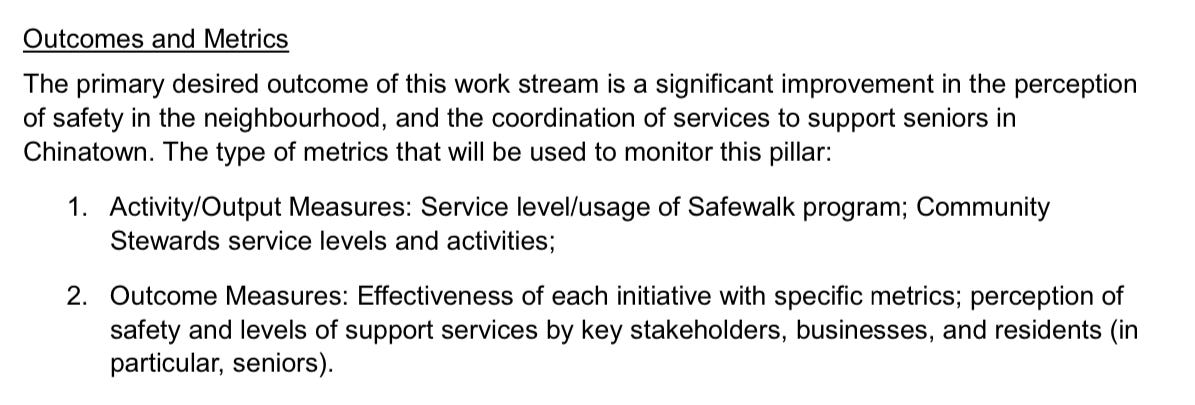Uplifting Chinatown - Band-aids but no Long-term Solutions
When will Vancouver deal with its open drug scene?
Picture taken from Vancouver Planner.
Chinatown has been unreasonably struggling with decades of neglect resulting from the neighbouring open drug scene and the “drug use is a human right movement.”
Tues Jan 17th, City of Vancouver staff will present their 3 pillars to uplift Chinatown:
Cleaning and sanitation
Graffiti abatement strategies and placemaking
Community supports
Cleaning and sanitation - A million dollars to clean up street feces and garbage produced by a select segment of the population for one year, without a mitigation plan to prevent this behaviour.
Of course, there needs to be public toilets, but the publicly funded drug consumption sites need to pull their weight here and have more public toilets that they can supervise and take responsibility for.
Why should property taxes be raised when existing non-profit funds could be better used to manage the street behaviour and feces problem?
Graffiti abatement strategies and placemaking - $210,000 to clean up graffiti in Chinatown without a mitigation plan.
Community supports - This is limited to some non-profits servicing Chinese-Canadian seniors and enhancing the perception of safety.
What is missing from this staff report and what is essential to the future of Chinatown is the elimination of the open drug scene in the Downtown Eastside.
This would take several years and serious will from senior levels of government. The current one with Premier David Eby lacks decisiveness. He’s already backed away from the promise of humane, involuntary treatment of people that repeatedly overdose and sustain anoxic brain injury, and creating a provincial centre for treatment for those with severe mental health and addictions issues that can’t be managed in the community.
However, there is no reason why the City of Vancouver cannot take initiative here, placing some of the promised 100 new police officers and 100 new psychiatric nurses into the area to co-manage public disorder created by some of those suffering from a dual diagnosis.
This article is repeatedly cited by Michael Schellenberger:
One shared theme is that assertive social services seem to be a prerequisite of an effective response. Typically the cities have created active and assertive outreach services to contact and engage with drug using individuals on the street. This response was coordinated with or conjoint with police patrols or officers, in particular to prevent the development of drug scenes. The cities also provided a range of services such as night shelters and other housing opportunities, contact centres as a place to be during the day, and opportunity for cheap food, washing, needle dispensing etc. The service also served as a gateway to low threshold health services and maintenance programmes. But at the same time it was agreed that open drug scenes are destructive, and that the provision of services should not increase the attraction of the drug scenes and not be offered on scene.
Underlying these measures has been a basic acceptance of drug users including those who have been unable or unwilling to stop the use of illegal drugs, but this was combined with a policy not to permit the continuation of destructive behaviour in terms of public nuisance. The cities established policies of “no tolerance” for public nuisance but nevertheless developed appeasement, and found approaches to “coexistence” between society and users of illegal substances. This helped to end unfruitful controversies between liberal and conservative ideologies and policies. The solutions are found in appropriate combinations of harm reduction and restrictive measures.
A common observation was that where there had been political and professional disagreements and conflicts, these obstructed the implementation of any effective policy. A common theme was that ongoing political and ideological conflicts seem to have prevented solutions and effective measures for several years. Only when consensus had been reached at sufficiently high political and administrative levels, has real progress been achieved. Another important aspect was long term policies. The cities all emphasized a time perspective of several years for the implementation of both helping and control measures.
Conflicting ideologies? Sounds like Vancouver!
It’s time to give Chinatown HOPE - hope that serious social problems can be managed and that people can respectfully behave in society.
Please send your comments to Council.







